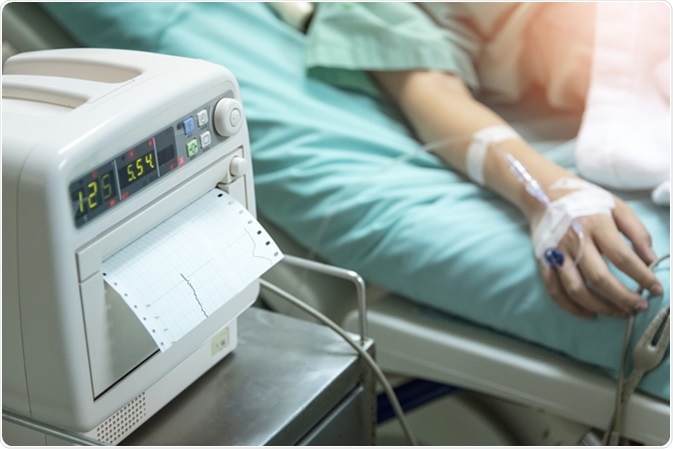For The Latest Medical News, Health News, Research News, COVID-19 News, Pharma News, Glaucoma News, Diabetes News, Herb News, Phytochemical News, Thailand Cannabis News, Cancer News, Doctor News, Thailand Hospital News, Oral Cancer News, Thailand Doctors
Sepsis is a life-threatening condition in which the body systemically responds to an infection. Although relatively rare, sepsis during pregnancy is one of the leading causes of death in mothers and complications for the fetus.
Treatment can be difficult, given the presence of the fetus, and so litigation in relation to sepsis centers on prevention of infection, early identification and treatment support.

Sepsis during pregnancy is a relatively rare condition, yet still a significant cause of mortality. Like most kinds of sepsis, sepsis during pregnancy is on the rise due to increased age of mothers.
Sepsis-related mortality in mothers has increased from 0.81 per 100,000 pregnant women in 2003-2005 to 1.13 per 100,000 in 2006-2008. More women are giving birth over the age of 40, which means they are more likely to have chronic health conditions such as diabetes and obesity. Such chronic health conditions, or comorbidities, are significant risk factors for developing sepsis.
While fantastic, new technologies such as artificial insemination and fetal medicine do increase the occurrence of high risk pregnancies. This is also believed to underlie the rise in sepsis during pregnancy. Septic shock can also occur after delivery, although it is very uncommon at around 0.002% to 0.01% of the time.
Sepsis is one of the top causes of mortality in pregnancies, together with hemorrhage, hypertensive disease and abortion.
Certain infections are more common in pregnant women and can be the starting point for the pathogen infection which triggers sepsis. Urinary tract infections (UTIs) is common during pregnancy due to a reduction in the kidney’s concentrating ability. This leads to the presence of bacteria in the urine, called bacteriuria. The ureteral dilation during pregnancy then allows for ascending infections, predisposing up to 40% of pregnant women to inflammation in the kidneys because of this. Sepsis with a source in the urinary tract is often treated with antimicrobials. However, antimicrobial resistance is rising in urinary tract infection pathogens, making it a serious issue that is hard to treat.
Bacterial pneumonia is a common source of sepsis and is likewise so in pregnant women. Influenza and varicella are potential causes of rapidly progressive viral pneumonia in pregnant women, with the emergence of H1N1 influenza (swine flu) making pregnant women vulnerable to severe pneumonia.
This was particularly true if afflicted with any of the aforementioned comorbidities. Here, where the source of the infection is viral and not bacterial, antiviral medication and infection control parameters are used to stop spread and hopefully curb the onset of sepsis.
Treatments typically follow standard sepsis treatment, wherein re-establishing good levels of tissue perfusion is one of the early steps. The fluids used in resuscitation are debated, but in general pregnancy is not a condition that necessitates the withholding of vasopressors or inotropic agents which are usually supplied. On the other hand, dopamine and norepinephrine can be deceptive as they can improve the maternal state while damaging blood flow to the placenta and uterus. This would be in addition to the altered balance between fetal oxygen supply and consumption that can be altered when the mother develops sepsis.
Sepsis can lead to pulmonary edema due to increased permeability of the vascular system in the body. This may facilitate the need for invasive mechanical ventilation. Invasive mechanical ventilation is used in conjunction with sedative and/or neuromuscular blocking agents, which are also capable of crossing the placenta. They can then cause a reduction in fetal heart rate variability and fetal movements, which obstructs proper monitoring of the fetus and its health.
When sepsis is detected, blood cultures are taken and examined so that appropriate antibiotics can be administered as soon as possible. In pregnant women with sepsis, the sepsis is often caused by several pathogens, which necessitates the use of broad spectrum antibiotic therapy. However, several antibiotics have modified pharmacological properties in pregnant women. This includes greater distribution volume and changes in absorption and excretion. In the end, the serum drug levels are reduced, especially by antibiotics excreted in urine. In addition to that, certain antibiotics are unsafe for the fetus and therefore need to be avoided.
Professionals in the field are also looking to prevent sepsis complications in pregnant women before treatment becomes necessary. Excessive blood coagulation is induced by both pregnancy and sepsis. This means that preventing blood clots inside vessels, otherwise known as thrombosis, is critical. Compression socks, intermittent lower limb compression and blood thinning medication in addition to stimulation of early walking are often used to prevent thrombosis.